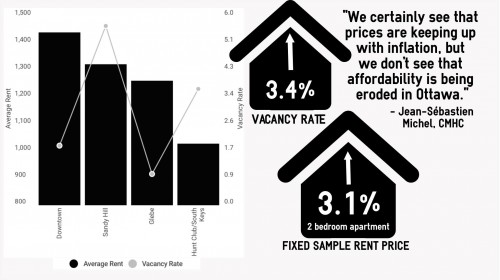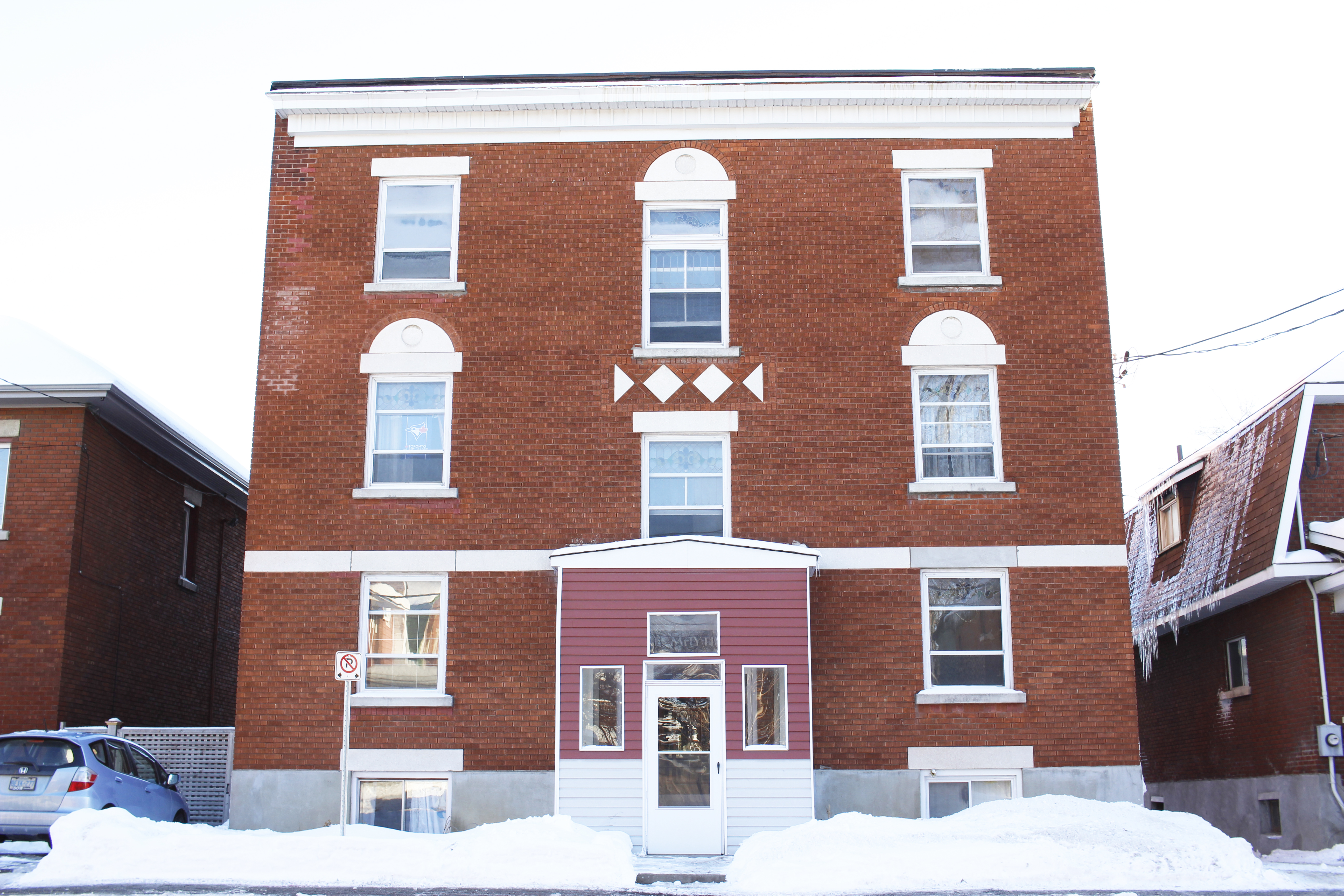Supply exceeded demand in Ottawa’s rental housing market in 2015, pushing vacancy rates to an 11-year high, according to a report by the Canadian Mortgage and Housing Corporation (CMHC).
The CMHC reported that rental unit vacancy rates rose from 2.6 per cent in 2014 to 3.4 per cent in 2015. In comparison, the average vacancy rate in Ontario was 2.4 per cent this year.
Students make up a large portion of rental property tenants in Ottawa, a city with two universities and four colleges. Inder Gida, a manager at Ottawa Student Housing, said he’s seen student housing companies as well as smaller landlords struggling to fill vacant units.
“There’s more supply now, and demand hasn’t been keeping up with the supply. The enrolment at universities has not increased at the same rate that big student housing projects have increased,” Gida said.
Aside from university enrolment rates, Jean-Sébastien Michel, an Ottawa housing market analyst with CMHC, said job cuts in the city have led many young people to choose to live at home to save money.
“The economic environment in Ottawa in terms of employment hasn’t been great, especially full-time employment,” Michel said. “That’s the type of trend that lends to that [18 to 24] age group staying longer at home, when they don’t have the stable income to finance a monthly rental payment.”
However, students looking for rental housing in Ottawa shouldn’t expect to pay less on their rent. The CMHC survey also showed that despite increasing vacancy rates, average rent has actually risen in the past year for these units.
According to Michel, this shouldn’t worry students too much. While the vacancy rate for rental housing has risen in Ottawa over the last year, it hasn’t jumped high enough that rent will be pushed down to compensate, at least not yet, Michel said. Average rent may continue to increase, but not by a sizable amount.
“We certainly see that prices are keeping up with inflation, but we don’t see that affordability is being eroded in Ottawa,” Michel said.

He also explained that vacancy and rent vary significantly depending on the size, age, and location of the unit. The rates calculated in the CMHC report are averages that don’t apply to every rental property across the city. Vacancy rates might be up in one area and not the other, and prices act the same way.
For instance, vacancies went up since last year in Alta Vista, Hunt Club and South Keys, downtown, but went down in the Glebe and Old Ottawa South, Sandy Hill and Lowertown, Vanier, Chinatown, and Westboro and Hintonburg.
As for whether increased vacancy might affect a student’s decision to live off-campus instead of in a university residence, Laura Storey, Carleton University’s housing director, said it shouldn’t.
“There are particular people who want to live in residence, and we only have a certain number of spots for upper-year students. We still have demand, we still have a waitlist for people wanting to live in residence,” Storey said. “Our demographics are different from what the city would see. I think we cater to a slightly different market.”






